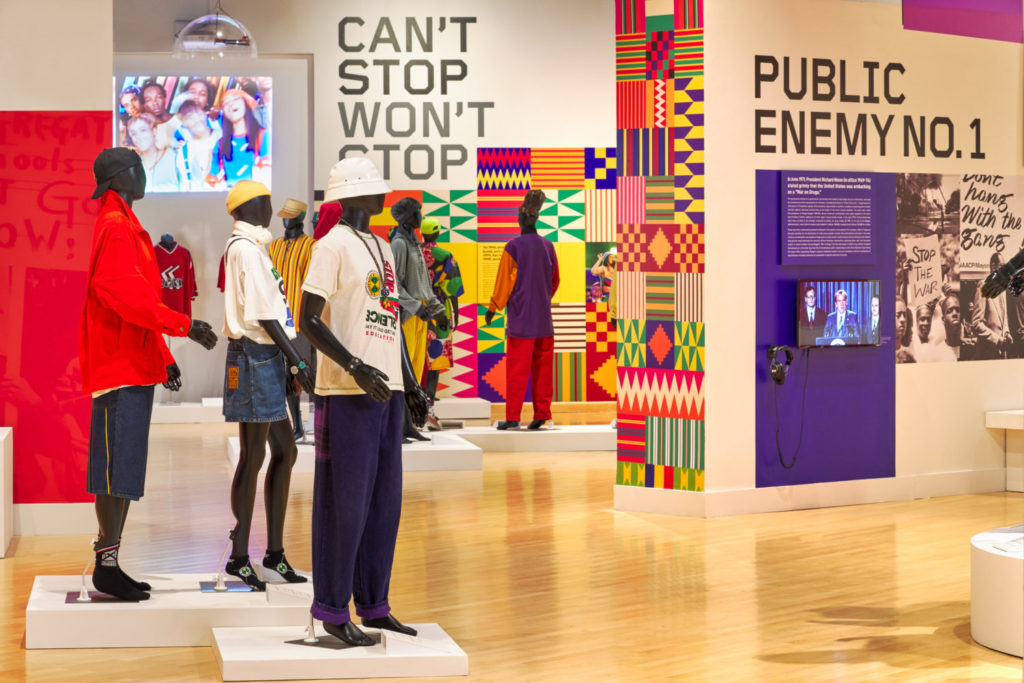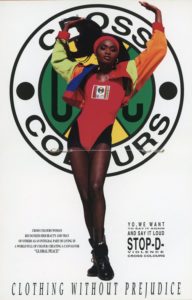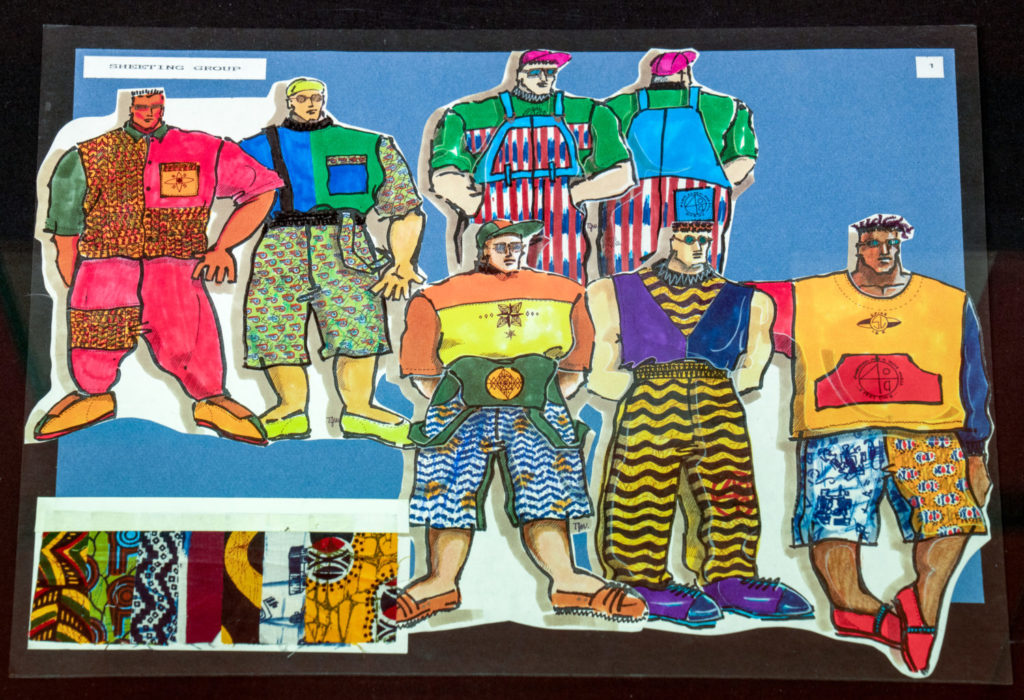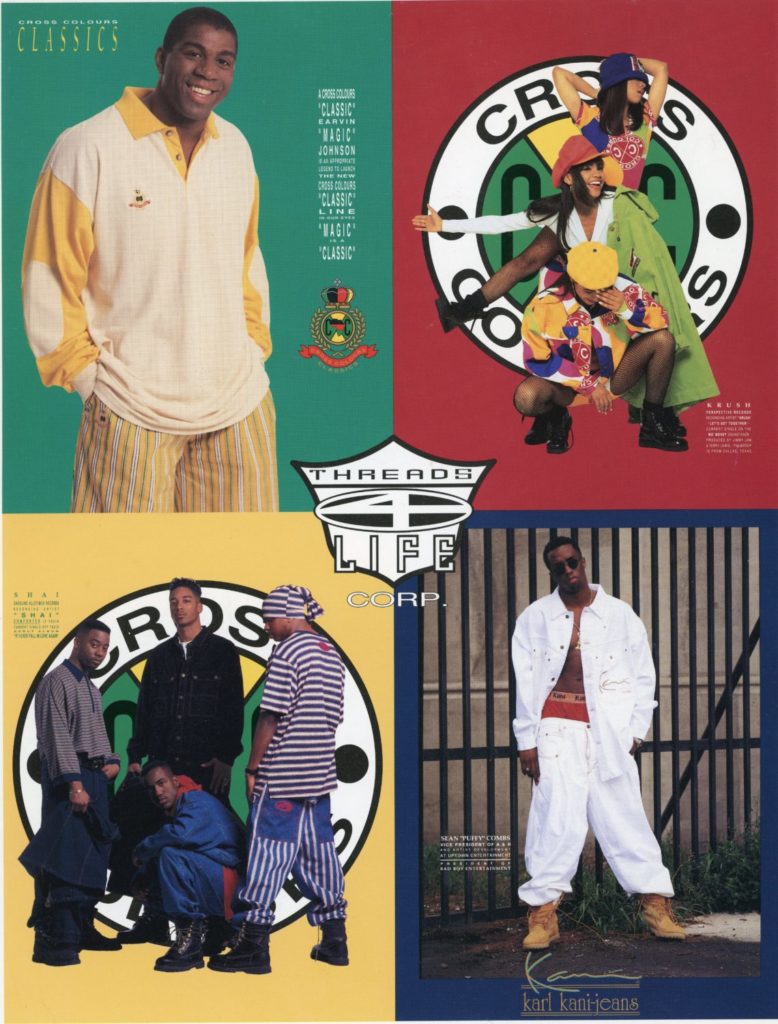When designers Carl Jones and T.J. Walker launched the Cross Colours clothing line in Los Angeles in 1989, the pair had no idea it would infiltrate television and hip hop, revolutionize the fashion industry, and impact African American street culture. Now, thirty years later, the California African American Museum (CAAM) is hosting an exhibit to canonize the fashion brand, titled Cross Colours: Black Fashion in the 20th Century.
“We started the brand because we saw a void in the market in terms of people of color,” T.J. Walker tells the Weekly. “We wanted to make sure that people understood that we actually recognized that by actually having people of color on all our products and everything that we do — from the actual advertisements to the marketing, and also to the branding and the product.”
The brand’s signature colors — red, green, and black — are typically associated with Africa, and were chosen for their strength and connection to the region. This color-blocked trifecta, sometimes juxtaposed against silhouettes of the continent of Africa, positioned the fashion line as unquestionably pro-black.
In an era when more form-fitting clothing was en vogue and most models featured in fashion catalogues and on TV were white, Cross Colours models sported ultra baggy jeans for a uniquely urban aesthetic, and equally bright and baggy tops, which popped against models’ brown skin.

Cross Colours, installation view at CAAM (Photo: Elon Shoenholz)
Cross Colours positioned itself as a voice of urban youth, with clothing that was fashion forward and community oriented. Consumers simultaneously became walking canvases and PSAs for the brand. One t-shirt featured in the exhibit read, “Unity Between Tribes,” which advocated for an end to violence in urban communities, while the brand’s “Love No Matter What Colour You Claim” t-shirt, also featured in the exhibit, encouraged all Americans to love across color lines. Cross Colours’ bold “fashion activism” was a hallmark of the brand, whose tagline was: “Clothing Without Prejudice.“
The exhibit traces how the brand’s social-consciousness messaging through music, art, and television parallels the civil rights and black nationalist movements of the 1960s and ‘70s. It also highlights how Cross Colours continues to permeate American culture. Tyree Boyd-Pates, history curator at CAAM, tells the Weekly the museum wanted to explore the brand’s history because of its 30-plus year impact on culture, which included styling music artists like TLC, Snoop Dogg, and Tupac Shakur, and dressing actors on hit TV shows, including the 1990s’ In Living Color.

Cross Colours promotional featuring spokesmodel Sali, ca. 1992. (Photo by Michael Segal. Courtesy the Cross Colours Archive)
“We were really inspired by the viral moment in 2018, when Bruno Mars and Cardi B. were wearing Cross Colours on the world stage.” The exhibit showcases their performance of “Finesse” at the Grammys in 2018, along with footage of other trailblazing artists who have heralded the brand and its social messages.
Between the video clips and mini-history lessons sit original Cross Colours jeans and t-shirts, larger-than-life advertisements, and the designers’ original notes and fabric samples. The exhibit presents a colorful, multimedia celebration of the brand. Taylor Bythewood-Porter, assistant history curator at CAAM, says the exhibit is a look at “how historical moments influenced” Cross Colours’ emergence into an “iconic movement.”
Besides popularizing baggy clothes, which are commonplace today, the exhibit showcases how the line influenced an entire decade of fashion: “People may not know the brand Cross Colours off the top of their head,” Bythewood-Porter tells the Weekly, “but when you say, ‘I’m going to a nineties themed party,’ you’re thinking The Fresh Prince of Bel-Air and then you’re automatically thinking Cross Colours. And the fact that that show, and even Martin — they’re syndicated and they’re still being shown worldwide today. Cross Colours still very much has a presence, and an influence.”
California African American Museum, 600 State Dr, Los Angeles, CA 90037, (213) 744-7432, caamuseum.org, through March 3, 2020.

Cross Colours, installation view at CAAM (Photo: Elon Shoenholz)

Flyer from a Cross Colours press kit featuring Magic Johnson, the dance music group K.R.U.S.H., the R&B quartet SHAI, and Sean “Puffy” Combs, ca. 1993. (Photo by Michael Segal. Courtesy the Cross Colours Archive)
Advertising disclosure: We may receive compensation for some of the links in our stories. Thank you for supporting LA Weekly and our advertisers.

